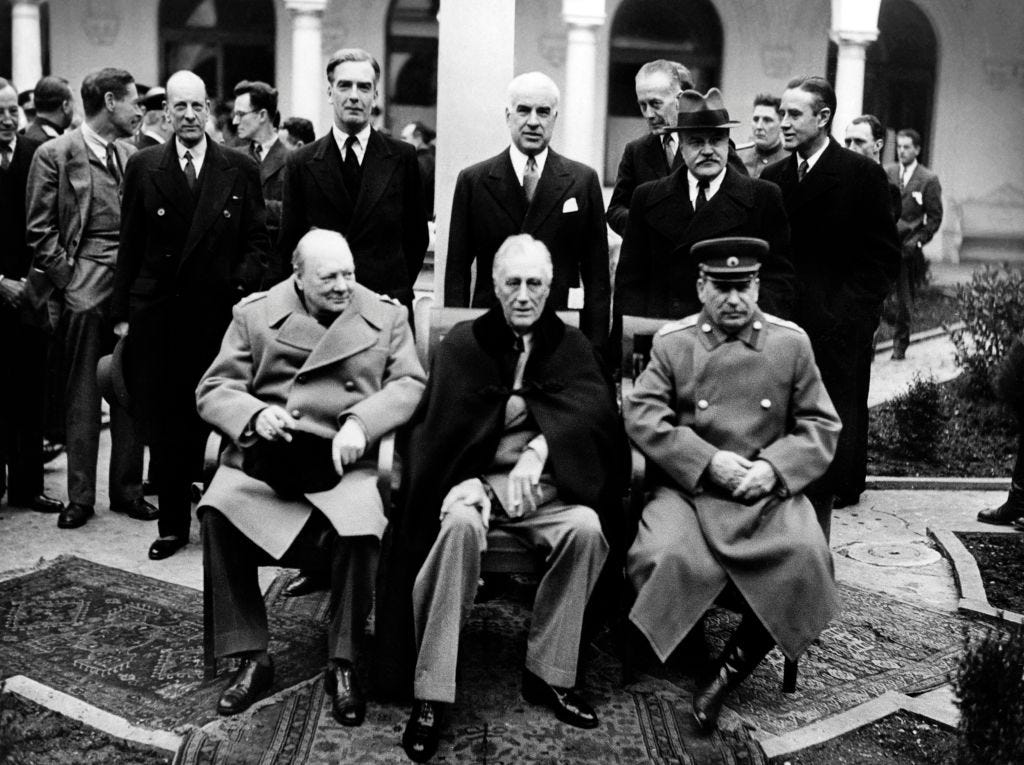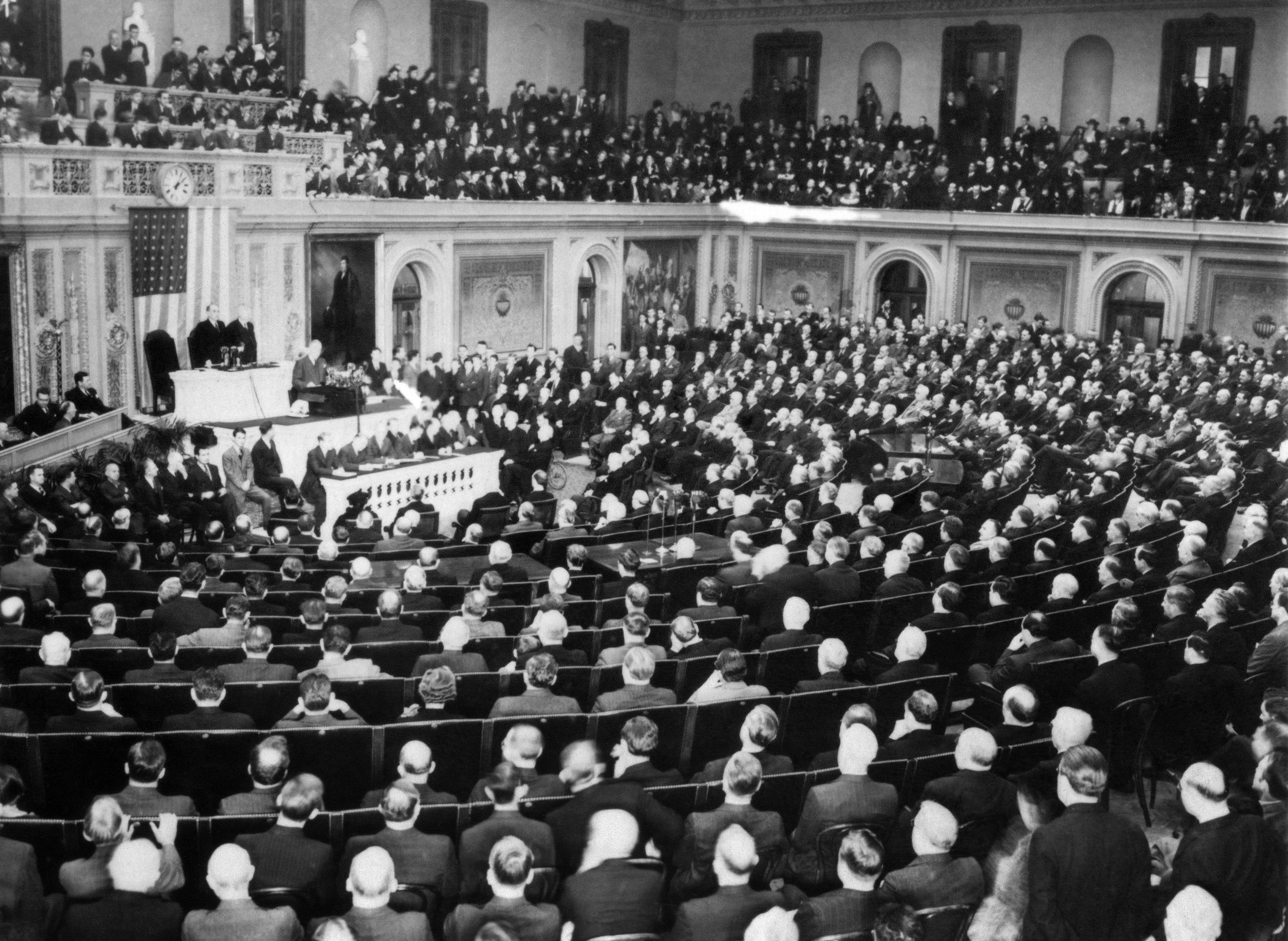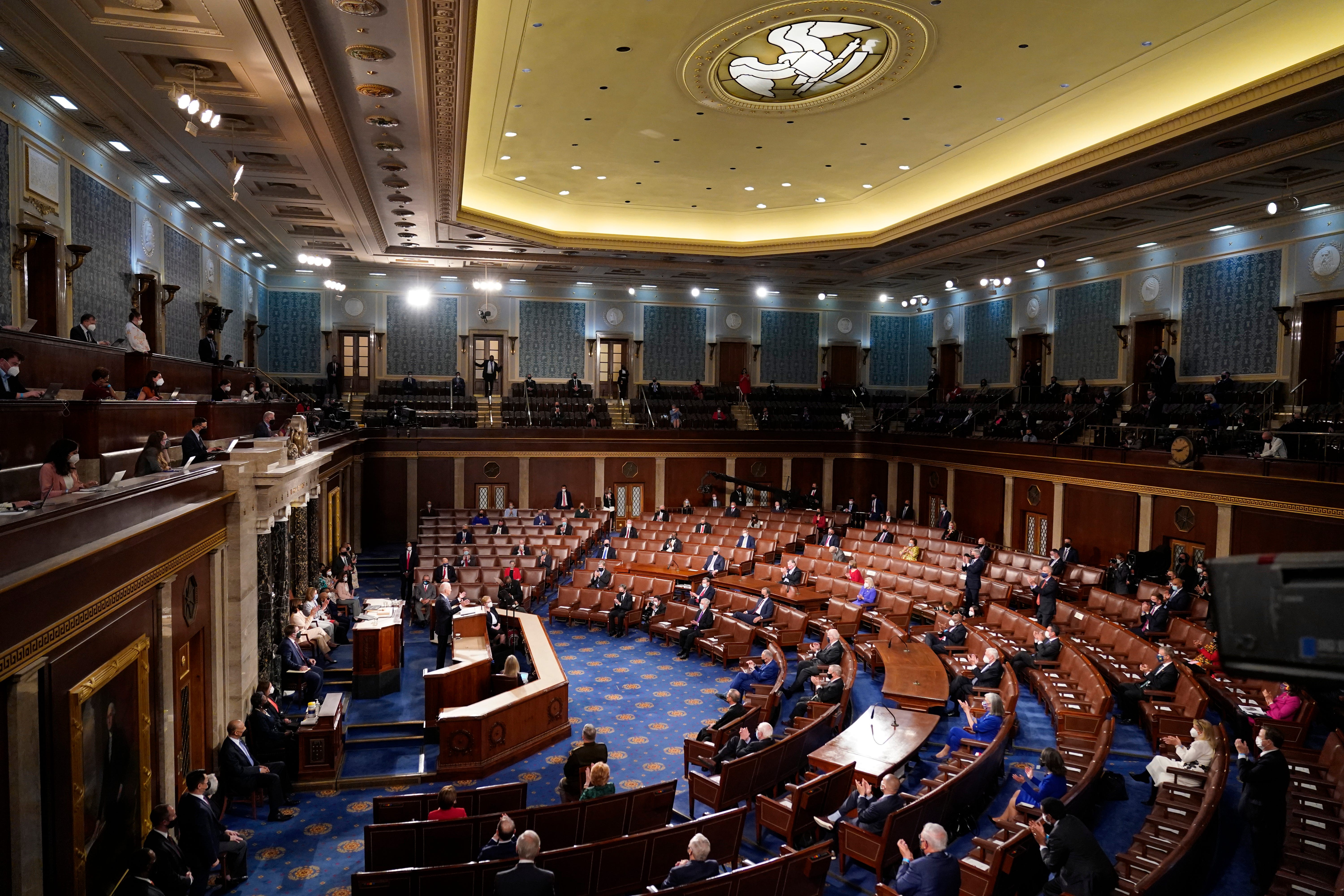WASHINGTON – The descendants of the men and women who designed and implemented President Franklin D. Roosevelt’s New Deal gather regularly on Zoom to strategize how to keep the pressure on President Joe Biden to likewise go big and bold.
“We would love to think that we have captured his attention and stirred the pot with some FDR seasoning,” said Scott Wallace, the grandson of one of Roosevelt’s vice presidents and one of five descendants who has been urging Biden for the past year to pass a “21st Century New Deal.”
Biden hasn’t seemed to need the encouragement.

“There’s a new bargain,” Biden said during a May trip to Cleveland to push for the trillions of dollars he wants to spend on infrastructure, education, health care, child care and more. “Everyone is going to be in on the deal this time.”
Many comparisons – not all of them favorable – have been made between the size and scope of Biden’s ambitions and Roosevelt’s programs and the World War II spending that lifted the nation out of the Great Depression.
Transportation Secretary Pete Buttigieg, who has been at the forefront of selling the infrastructure component of Biden’s plan, calls it the “largest jobs package since World War II.”
“Today’s effort might be described as ‘the big deal,’” Buttigieg said in a May speech to graduates of the Harvard Kennedy School. “The big deal is based on a big ambition to demonstrate how good government can indeed do big and good things and do them well.”
Beyond the word play, there are other Rooseveltian echoes.
Biden’s plan to give all Americans access to affordable and reliable high-speed internet evokes the New Deal initiative to bring electricity to rural America.
Updating Roosevelt’s Civilian Conservation Corps that put millions of men to work on conservation and development projects on rural lands, Biden wants to create a Civilian Climate Corps to address the threat of climate change.
4 charts: Joe Biden wants to spend $2 trillion on infrastructure and jobs.


While President Franklin D. Roosevelt created a Civilian Conservation Corps, President Joe Biden has proposed a Civilian Climate Corps. It would employ thousands of young people to address the threat of climate change.
While President Franklin D. Roosevelt created a Civilian Conservation Corps, President Joe Biden has proposed a Civilian Climate Corps. It would employ thousands of young people to address the threat of climate change.
Associated Press, Getty Images
Just as labor unions were boosted by the National Labor Relations Act of 1935 that sanctioned the right to bargain collectively, Biden has repeatedly emphasized the importance of unions, including calling on Congress to strengthen protections for workers’ right to organize.
While Roosevelt had an “Arsenal of Democracy” to sell military supplies to Great Britain and France, Biden has declared that the United States will be the world’s “arsenal of vaccines” in the shared fight against the coronavirus.
At the start of Biden’s first foreign trip this month, he and British Prime Minister Boris Johnson released a “revitalized” Atlantic Charter, updating the 1941 attempt by Roosevelt and Prime Minister Winston Churchill to rally the West at a time of global crisis.
And don’t forget about the massive portrait of FDR that hangs across from his desk, over the Oval Office fireplace.
‘It can’t just be a coincidence’: How Biden is using artwork to underscore his message to America


But, after swift passage of a $1.9 trillion coronavirus relief package in March, Biden’s hope of making generational and transformational changes is running up against the reality of a closely divided Congress and the clock.
“Time is running out,” said Stephen Wayne, an expert on the American presidency who is writing a book on Biden’s presidency. “He will not end up getting as much done as he wants to get done.”
Presidents typically achieve their biggest accomplishments early in their first terms. But Democrats have no room for error in the 50-50 Senate and Sen. Joe Manchin, a moderate Democrat from West Virginia, has resisted moving forward without support from some Republicans.
A bipartisan group of senators is working on a smaller version of Biden’s proposed spending on public works like roads, bridges and broadband.
But progressives, who have been pleasantly surprised by the scope of Biden’s plans, don’t want to cede ground. In fact, some Senate Democrats are trying to raise the price tag.
“What we are working right now is on a budget that builds on the proposals that the president has brought to us,” Vermont Sen. Bernie Sanders said on Thursday,
Democrats know they could lose control of the House next year unless Biden defies history. Since the 1930s, the president’s party has lost House seats in every midterm election during the president’s first term with two exceptions: the 2002 midterms during President George W. Bush’s second year that came after the 2001 terrorist attacks and the 1934 midterms during Roosevelt’s first term.
“FDR gained seats in Congress,” said his grandson, James Roosevelt, Jr. “People saw what he was doing to restore the health of the country, both physically and financially.”
Negotiations: $1.2 trillion bipartisan infrastructure deal gaining steam on Capitol Hill
Biden has repeatedly described the moment as a test of government, not just to show it can deliver for people but also that democracy works – and performs better than autocracies.
“I think this generation is going to be marked by the competition between democracies and autocracies, because the world is changing so rapidly,” Biden said when releasing in April his “American Jobs Plan.” “The autocrats are betting on democracy not being able to generate the kind of unity needed to make decisions to get in that race. We can’t afford to prove them right. We have to show the world – and much more importantly, we have to show ourselves – that democracy works.”


Before President Joe Biden met with the leaders of the some of the world’s wealthiest nations at the Group of Seven summit in England in June, he and British Prime Minister Boris Johnson released a “revitalized Atlantic Charter.” The charter is modeled on a historic joint statement made by Prime Minister Winston Churchill and President Franklin D. Roosevelt in 1941, setting out their goals for a postwar world.
Before President Joe Biden met with the leaders of the some of the world’s wealthiest nations at the Group of Seven summit in England in June, he and British Prime Minister Boris Johnson released a “revitalized Atlantic Charter.” The charter is modeled on a historic joint statement made by Prime Minister Winston Churchill and President Franklin D. Roosevelt in 1941, setting out their goals for a postwar world.
Getty Images
While the updated Atlantic Charter may burnish Biden’s claim to Roosevelt’s economic legacy, a lot has changed since FDR, according to Stewart M. Patrick, an expert at the Council on Foreign Relations.
“The two most important, relevant differences may be the diminished position of the United States and the internal political divisions that beset America today,” Patrick wrote in an analysis for World Politics Review.
‘Trump is gone,’ but lingering: As Biden vows ‘America is back,’ allies wonder for how long
As Biden aims to put pressure on a disruptive Russia and an economically ascendant China, Democrats have sounded the alarm about the Jan. 6 Capitol insurrection, former President Donald Trump’s false claims of a stolen election and laws passed in Republican-led states placing new restrictions on voting rules.
When Roosevelt was elected, totalitarian states were on the rise. He also faced pressure from within the United States for a “benevolent autocracy” to wield power sufficient to deal with the nation’s immense problems.
Biden’s American Families Plan in charts: What’s in the plan with subsidized child care and free pre-K

That tussle was the first thing Biden mentioned when recounting, in an October interview, how he was re-reading Jonathan Alter’s book about FDR’s first 100 days.
“There’s no such thing as a guaranteed democracy,” Biden said in a podcast interview with author and lecturer Brenê Brown. “It has to be fought for every time. If you read just the first chapter, talk about how guys like Walter Lippmann were telling Roosevelt, ‘We have to have a dictatorship to get it right.’…There’s nothing automatic about this.”
Central to that argument is Biden’s ability to get the economy back on track, not just to recover from the pandemic but to deepen federal investments in the workforce, families, infrastructure, research and development and the environment that the administration says are long overdue.

“We’re in the midst of a fourth industrial revolution of enormous consequence,” Biden said at his first full press conference in March. “Will there be middle class? How will people adjust to these significant changes in science and technology and the environment? How will they do that? And are democracies equipped – because all the people get to speak – to compete?”
Local impact: Joe Biden looks to sell child care, education plan with state-specific pitches
It’s a framework that is a natural fit for Biden whose long Senate career was defined more by his foreign policy expertise than work on the types of domestic spending he is now championing.
Biden nodded to that new overlap in interests in his Cleveland speech.
“They’d always announce me in the past as an expert in foreign policy,” he said. “Well, let me tell you something: Economic policy is harder than foreign policy. You know what the basis of foreign policy is in our stature in the world? One thing: our economic prowess.”
As a sign that the nation’s approach – which has focused heavily on getting Americans vaccinated along with the $1.9 trillion coronavirus relief package – is working, Biden touts the fact that the U.S. economy is growing faster than any other major economy.
Biden’s proposals aren’t as big a share of the economy as Roosevelt’s, but they’re more comparable when combined with coronavirus relief passed during Trump’s administration, according to one calculation. The cost of Roosevelt’s New Deal was roughly 40% the size of the national economy in 1929, estimates Bill Dupor, an economist and assistant vice president at the Federal Reserve Bank of St. Louis.
The $1.9 trillion coronavirus relief package combined with about $4.1 trillion in additional spending Biden initially proposed – which may get scaled back – is about 28% as large as the economy was in 2019, before the pandemic hit. But, when combined with the $3.3 trillion in coronavirus relief spending that passed in the last year of the Trump administration, the total cost would be 43% as large as the 2019 economy if fully enacted.

June Hopkins, the granddaughter of Roosevelt’s commerce secretary, sees similarities between Biden’s assessment of the situation and FDR’s.
“The idea that democracy is at risk now is the same fear that Roosevelt had of democracy being at risk because of the Depression,” she said.
Fascism was growing in Europe and in Japan. The collapse of the economy created public unrest in the United States. There were pushes from the left as well as the later rise of the America First Committee to keep the nation from entering World War II.
While dealing with those problems, Hopkins said, Roosevelt, during the 1930s, kept his attention on the economy.
“He knew that if America would fail economically, it would also fail politically,” she said.

The huge expansion of government under Roosevelt got another boost from the Great Society programs under President Lyndon Johnson before President Ronald Reagan declared during his 1981 inaugural address: “Government is not the solution to our problem, government is the problem.”
“Biden, it seems to me, is trying to put a minus sign in front of that proposition,” Bill Galston, a senior fellow at the Brookings Institution said in an April discussion at the think tank about Biden’s first 100 days. “And everything that he does is unified by the proposition that, in the circumstances we now face, government is the solution and not a problem.”
Reagan’s view predominated even through Democratic administrations like Bill Clinton’s, during which Galston was a domestic policy adviser. Clinton, in his 1996 State of the Union address, declared that “the era of big government is over.”
President Barack Obama, whom Biden served as vice president, faced bipartisan consensus that deficits are bad, noted Alter, author of “The Defining Moment: FDR’s Hundred Days and the Triumph of Hope.”
“For 50 years, Dems have lacked a prez who could build on New Deal,” Alter tweeted in March, calling Biden “FDR’s first true heir since LBJ.”
But Dan Pfeiffer, a former communications director to Obama, said the relative ease with which Biden passed the coronavirus relief legislation belied how difficult it will be for Biden to achieve the rest of his grand plans.
“Even I – a dyed-in-the-wool pessimist – got swept up in the FDR comparisons,” Pfeiffer recently wrote in a newsletter published on Substack. “Passing a relief bill in the middle of a pandemic was always going to be exponentially easier than holding together the Democratic coalition to pass multi-trillion-dollar structural changes to the economy and electoral system.”
Likewise Wayne, the presidential scholar, said fiscal conservative arguments against Biden’s plans are still potent because the nation hasn’t moved that far left.
“It’s liberalized a little bit,” said Wayne, a professor emeritus at Georgetown University. “But we’re still closer to the age of Reagan than we are to the domestic dimension of Roosevelt and Lyndon Johnson.”
More: Democrats say Mitch McConnell is back to all-out obstruction. He says that’s ‘nonsense’
In a May speech to the U.S. Chamber of Commerce, Treasury Secretary Janet Yellen said that, for decades, the prevailing focus has been on the need to decrease and then limit the size of government as a share of the economy.
“This approach to U.S. fiscal policy, founded on a distrust of government motives and effectiveness, along with a resistance to higher taxes, has had profound effects on our nation and our people,” she said. “It is time to recommit our government to playing a more active and smarter role in the economy.”
But when the administration released budget projections showing that, under Biden’s plans, the nation’s debt would rise, relative to the size of the economy, to higher levels than during World War II, Republicans said it showed overreach by the new administration.
“The best thing you can say about this budget is that it will never happen,” said Texas Rep. Kevin Brady, the top Republican on the House tax-writing committee.
Former Vice President Mike Pence charged that while Biden campaigned as a moderate, “he has governed as the most liberal president since FDR.”
More: President Biden’s budget proposal projects debt rising past WWII levels
A recent Pew Research Center poll showed public trust in government remains low. Those more likely to want the government to do more to solve problems – women, minorities and younger people – are the foundation of the Democratic base.
It’s a base that, under Roosevelt, included blue collar workers who have been migrating to the GOP in recent years.
Biden is betting that his economic programs can win back some of those voters.


President Franklin D. Roosevelt enjoyed large Democratic majorities in the House and Senate. When the nation elected President Joe Biden, however, voters gave Democrats a very small majority in the House and no margin for error in the Senate.
President Franklin D. Roosevelt enjoyed large Democratic majorities in the House and Senate. When the nation elected President Joe Biden, however, voters gave Democrats a very small majority in the House and no margin for error in the Senate.
Getty Images
“The other side of the argument, and it’s an ongoing argument among strategists in the Democratic Party, is that the essence of the working class opposition to Democrats and to the Biden presidency is less about economics than it is about culture and race,” Galston said.
If that’s the case then, even if Biden is successful, his programs “may not have the kind of political payoff that the Biden administration is hoping for,” he added.

While Republicans try to thwart Biden’s plans, progressives are keeping the pressure on.
The descendants of the New Deal architects began their efforts during the 2020 campaign with a full-page ad in Biden’s hometown paper, asking him to “champion a 21st Century New Deal that will restore belief in a government that works for all Americans.”
“We believe that bold action, particularly for jobs, is exactly what’s necessary,” said James Roosevelt, Jr.
And he’s pleased with what he’s seen so far from a president who, early in his campaign, said America is not looking for a revolution.
“I think Joe Biden has evolved with the time,” Roosevelt said, “and come to understand what is needed in 2021.”
Labor shortages: Are there enough workers for the jobs that Biden’s plans would create?








